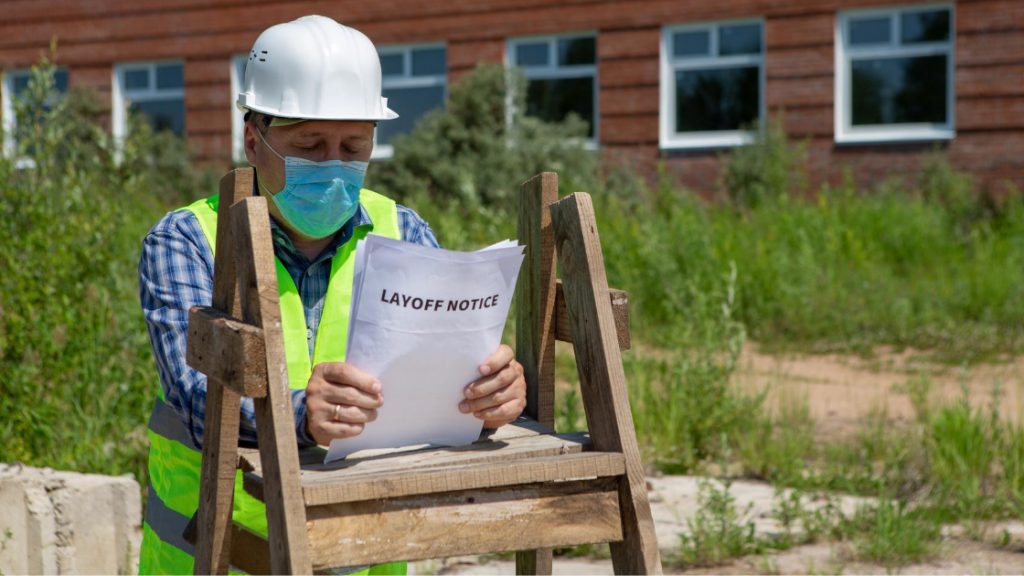CPA’s take: The re-layoff phenomenon needs to be considered as Congress deliberates on COVID relief.
And you thought the second wave of the coronavirus was nasty. Before the second wave has even hit first wave hot spots like New York, a second wave of layoffs is coming. Thank you, lockdown gurus!
[Kenneth Rapoza | August 4, 2020 | Forbes]
A study by Daniel Alpert of Cornell University, the Job Quality Index and RIWI Corp. shows that another round of layoffs and furloughs is under way as Congress debates what to do about the phase four coronavirus relief plan. Alpert may be best known as leader of Westwood Capital, a well-known wealth management firm, and the author of “The Age of Oversupply: Confronting the Greatest Challenge to the Global Economy.”
The study, conducted from July 23 to August 1, showed that workers placed back on payrolls by employers after the first round of lockdowns are being laid off again.
The study was developed to test whether U.S. employees were vulnerable to business failures following the influx of U.S. government support to small and medium sized businesses that received an aggregate of $521 million in forgivable loans under the U.S. Treasury department’s Paycheck Protection Program (PPP) promulgated under the Coronavirus Aid, Relief and Economic Security (CARES) Act of 2020, the funding under which has been largely fully spent by its recipients. RIWI Corp used real-time data on the re-payrolling and layoff risk effect from the broadest possible set of American workers across many socio-economic spheres.
This is what they found:
Of employees who were placed back on payrolls after being initially laid off or furloughed, 31% said that were laid off a second time.
Some 26% of those placed back on payrolls report being told by their employer that they might be laid off again if restrictions remain, or are not lifted soon.
The responses were not divvied out among job type. But one question on the survey asked respondents to name their sector of employment. The main sectors to choose from were agriculture, manufacturing, technology or engineering, healthcare, education, financial services, construction, government, retail, or hospitality and leisure.
One surprising takeaway: the results of renewed layoffs were higher for workers in states that have not been experiencing recent Covid-19 surges.
This could be because states like New Jersey reintroduced new restrictions last month in the services sector, banning indoor dining at restaurants. Another possibility is that small and mid-sized businesses realized the demand was not there and cut people loose as a result.
According to the study, 37% of those employed as a staff worker somewhere have been laid off or furloughed – at least once – since March 1, 2020.
A total of 57% of those initially laid off or furloughed reported being put back on payroll sometime after their initial dismissal, and 39% said they have not yet called in to work. These numbers include those that were put back on payroll and then taken off it.
RIWI randomly engaged a total of 10,719 U.S. respondents at least 16 years of age and was in touch with them on a continuous basis with questions to determine who held a private sector job, which share of those were laid off, which share of those were re-hired, and which share was laid off or told they might be laid off.
A total of 6,383 people participated.
The RIWI process randomly engaged a new set of unique respondents each day, with no repeat respondents throughout the period. Results were consistent across the data collection period, despite a unique set of fresh respondents each day.
As states continue with restrictions months into the worst pandemic since the Spanish Flu of 1918, Congress is battling over how to fund the unemployed, and small business operators on the cusp of bankruptcy.
A new bill is expected by August 7, Barclays Capital analysts believe.
To date, the PPP funded 4.9 million businesses with over 51 million jobs. Businesses that made up 40% of all private sector jobs prior to the shutdown received PPP funds.
PPP recipients were given low interest loans (around 1%) equal to approximately 8 weeks of payroll costs, plus 25% more for other fixed operating expenses.
Those initial funds have been depleted. There is a chance that without reopening the economy, some of those borrowers will not be able to pay back their loans, loans that they never wanted in the first place, but actually needed in order to keep their employees on stand-bye for an eventual return to normal.
Normal is nowhere yet to be seen. And so those whose loans may not be forgivable face insolvency, Alpert and RIWI is saying.
Moreover, an additional group of companies may eventually suffer unless they cut costs and cut payroll as demand has not recovered and states like California reinstate lockdowns in dozens of counties.
Today’s results show that a considerable number of people got their jobs back in early phase reopening, only to be laid off again not long after. This is a worrisome trend – regardless of the trajectory of Covid-19 caseloads.
The takeaway from the survey is that more life support is needed from Congress until states lift all restrictions.
Continued lockdowns may slow the spread but will only prolong it, as we have seen. And so continual economic shutdowns “will only make matters worse,” survey analysts said.
Read the original article here.












